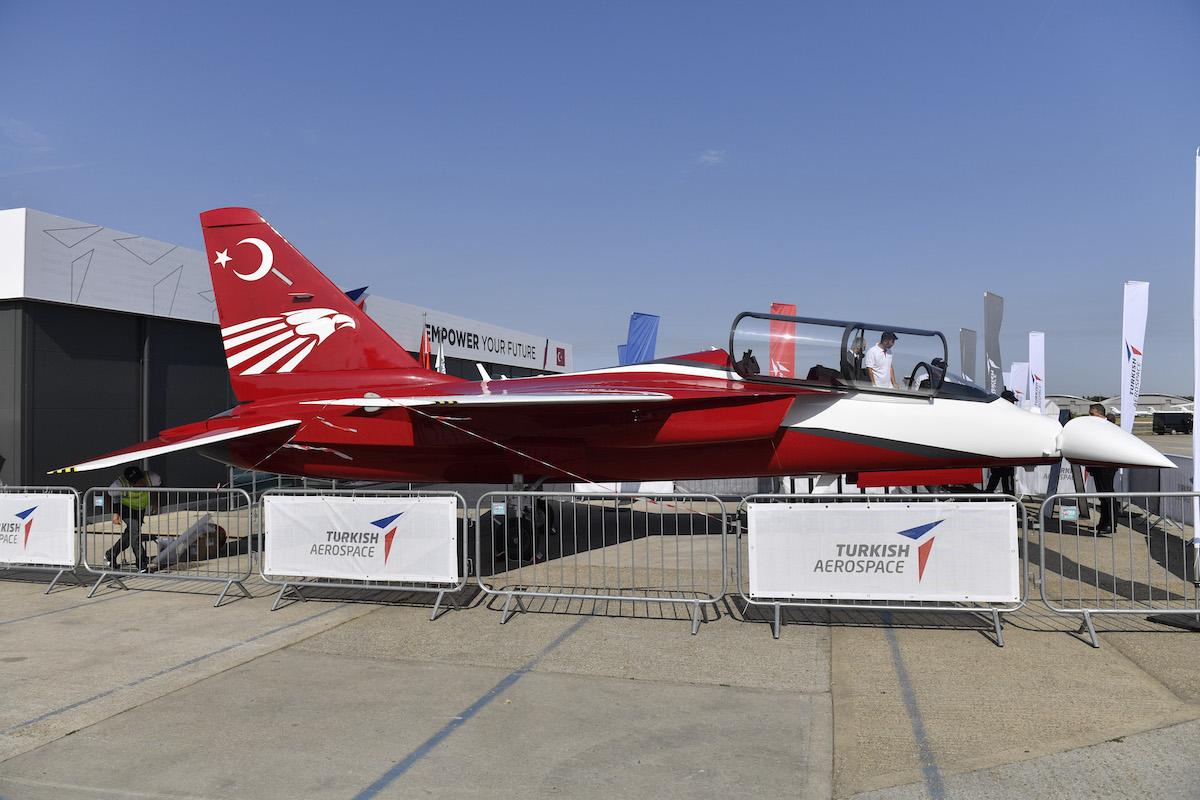
FARNBOROUGH—Turkish Aerospace CEO Temel Kotil said his company is committed to delivering two firsts next March with the rollout of its prototype indigenous fighter and the debut flight of the company’s Hurjet jet trainer planned for the same day.
Kotil told journalists at a company press conference at the Farnborough Airshow July 19 that teams of engineers are working to build the prototype TF-X—a twin-engine, supersonic, low-observable combat aircraft—while the first Hurjet prototype is in an advanced state of assembly as the company eyes March 18, 2023, milestones for both programs. The date is associated with Turkey’s victory at the Battle of Gallipoli in World War I.
The OEM wants to achieve a first flight of the TF-X exactly two years after the rollout on March 18, 2025. This will be followed by first deliveries to the Turkish Air Force in 2028.
Prototype aircraft will be powered by the General Electric F110 engine, an engine that Turkish Aerospace is already familiar with through the company’s work on license-built F-16 Fighting Falcons.
But with Ankara’s aim of delivering a 100%-indigenous platform, Turkey’s defense industry agency SSB has launched a tender to seek an international partner to help Turkish Aerospace subsidiary TRMotor build an indigenous fighter engine by 2028. “TRMotor has a preliminary design [for a new engine] already, and there are new tools which will help us, this is a new world of digital design,” Kotil told journalists.
Work on the TF-X is being supported by Hurjet, a supersonic-capable jet trainer that has been developed in-house with $1 billion of internal funding.
The General Electric F404-powered trainer already has secured 12 orders from the Turkish Air Force as T-38 Talon replacements, with deliveries beginning in 2025.
Kotil said the development of Hurjet was an indicator of the company’s increasingly advanced capabilities.
“In five years we have gone from the turboprop Hurkus to the supersonic Hurjet,” Kotil said. “We are hungry for success.”
Infrastructure to support the development of the TF-X and other future projects is rapidly taking shape at the company’s campus outside Ankara, including a wind tunnel, lightning test facility and a TF-X program office. Engineers from BAE Systems also are continuing to support design and engineering work on the TF-X program through a six-year government-to-government agreement signed in 2017. Kotil said a further phase of BAE support was currently under discussion.

